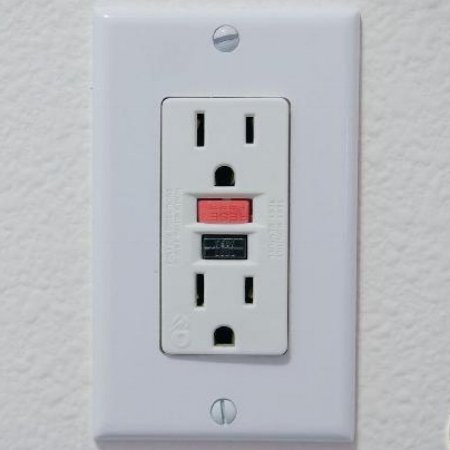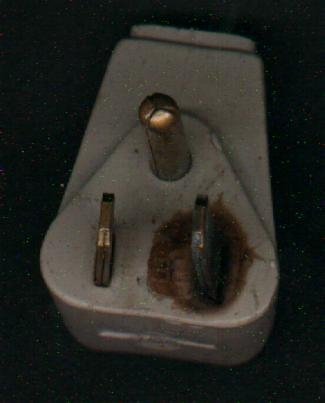What Is A GFCI (Ground Fault Circuit Interrupter) And How Does It Work?
Notice the left slot is a little larger than the right? Some appliances can only be plugged in one way.
In areas where water can be present, including kitchen, bathrooms, outdoors, and garage, there is an electrical outlet with extra layer of protection installed known as GFCI or Ground Fault Circuit Interrupter. These outlets are designed with circuit breakers as well as special sensors that may detect minimal changes in an electrical current by measuring how much current is moving from hot to neutral. If an overload, short or other type of anomaly are detected, a GFCI outlet will shut down automatically, which will stop the flow of the power to the electrical device.
GFCI may save a person from shock or even death. If a person is using a device near water and the device has a short, it could lead to electrocution if the power isn’t shut off quickly. A GFCI is also designed to prevent this.
The GFCI is built right into an electrical outlet, which has two small buttons labeled test and reset. One of the main purposes of GFCI is preventing a person from being a conduit for electricity. This is a circuit breaker, which kicks in when it detect that electrical current isn’t flowing the way it must be. An electrical outlet has hot, neutral, and ground wiring. If you plug something into an outlet, the electricity will flow from hot to neutral. If an electrical flow doesn’t follow the path as it should, GFCI will detect the issue and will cut off the power quickly. It cuts off very quickly, allowing you to avoid any possible danger of being shocked.
Hundreds of lives are lost yearly due to electrocution in the past. But, ever since GFCI was introduced, this number was reduced. Currently, local building codes mandate that every property should have GFCI outlets.
If your electrical appliance has a damaged plug or cord, do not use it.
How GFCI Works:
GFCI or Ground Fault Circuit Interrupters are made to detect even a small leak of electrical current. These can detect such discrepancies within 1/40th of a second and quickly act to stop the electrical current flow. Every time a GFCI outlet shuts off the power flow, there’s a small reset button on the front that will pop out on the outlet. It indicates that something is wrong and an outlet shut off itself to prevent any injury or damage. To use an outlet again, all you need to do is pressing the reset button back into the socket and start over again. If it doesn’t work or if your outlet frequently resets, you should consider hiring a professional to check it.
To test a GFCI, push the ‘reset’ button. On many devices the reset button is red, however, on some, the buttons are the same color as the outlet. Then, plug in a testing device, such as a lamp. Press the ‘test’ button. If the light goes off, the test is a success. If the light stays on, the unit has been damaged.
Hit the reset button and the light should go on again.
If the light doesn’t go off when you hit ‘test’, the GFCI isn’t working. The GFCI may have been damaged by lightning or could fail because the circuitry of GFCI’s doesn’t have a long life. These units need to be replaced. This type of failure actually happens quite often, which is why they need to be tested every month.
GFCIs are one of the most crucial electrical fixtures that you may install in areas that could become wet. If your home isn’t equipped with GFCI outlets or some of these are malfunctioning, you should contact an electrician. A professional can help you install GFCI properly and can troubleshoot it without causing any damage.
When in need of home electrical inspections, whole-house surge protector installation, attic fan installation, or smoke detector installation, electrical repair, or home electric car charger installation, trust the licensed and insured professionals at RSB Electrical. We are a 24-hour emergency electrician based out of Mesa, AZ. Call 480-485-4284 for more information.


